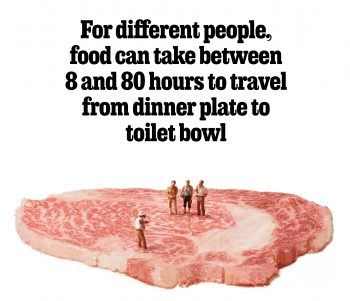Peter Wilson in MIL:
 As a general rule it is true that if you eat vastly fewer calories than you burn, you’ll get slimmer (and if you consume far more, you’ll get fatter). But the myriad faddy diets flogged to us each year belie the simplicity of the formula that Camacho was given. The calorie as a scientific measurement is not in dispute. But calculating the exact calorific content of food is far harder than the confidently precise numbers displayed on food packets suggest. Two items of food with identical calorific values may be digested in very different ways. Each body processes calories differently. Even for a single individual, the time of day that you eat matters. The more we probe, the more we realise that tallying calories will do little to help us control our weight or even maintain a healthy diet: the beguiling simplicity of counting calories in and calories out is dangerously flawed. The calorie is ubiquitous in daily life. It takes top billing on the information label of most packaged food and drinks. Ever more restaurants list the number of calories in each dish on their menus. Counting the calories we expend has become just as standard. Gym equipment, fitness devices around our wrists, even our phones tell us how many calories we have supposedly burned in a single exercise session or over the course of a day.
As a general rule it is true that if you eat vastly fewer calories than you burn, you’ll get slimmer (and if you consume far more, you’ll get fatter). But the myriad faddy diets flogged to us each year belie the simplicity of the formula that Camacho was given. The calorie as a scientific measurement is not in dispute. But calculating the exact calorific content of food is far harder than the confidently precise numbers displayed on food packets suggest. Two items of food with identical calorific values may be digested in very different ways. Each body processes calories differently. Even for a single individual, the time of day that you eat matters. The more we probe, the more we realise that tallying calories will do little to help us control our weight or even maintain a healthy diet: the beguiling simplicity of counting calories in and calories out is dangerously flawed. The calorie is ubiquitous in daily life. It takes top billing on the information label of most packaged food and drinks. Ever more restaurants list the number of calories in each dish on their menus. Counting the calories we expend has become just as standard. Gym equipment, fitness devices around our wrists, even our phones tell us how many calories we have supposedly burned in a single exercise session or over the course of a day.
It wasn’t always thus. For centuries, scientists assumed that it was the mass of food consumed that was significant. In the late 16th century an Italian physician named Santorio Sanctorius invented a “weighing chair”, dangling from a giant scale, in which he sat at regular intervals to weigh himself, everything he ate and drank, and all the faeces and urine he produced. Despite 30 years of compulsive chair dangling, Sanctorius answered few of his own questions about the impact that his consumption had on his body.
Only later did the focus shift to the energy different foodstuffs contained. In the 18th century Antoine Lavoisier, a French aristocrat, worked out that burning a candle required a gas from the air – which he named oxygen – to fuel the flame and release heat and other gases. He applied the same principle to food, concluding that it fuels the body like a slow-burning fire. He built a calorimeter, a device big enough to hold a guinea pig, and measured the heat the creature generated to estimate how much energy it was producing. Unfortunately the French revolution – specifically the guillotine – cut short his thinking on the subject. But he had started something. Other scientists later constructed “bomb calorimeters” in which they burned food to measure the heat – and thus the potential energy – released from it.
More here.
